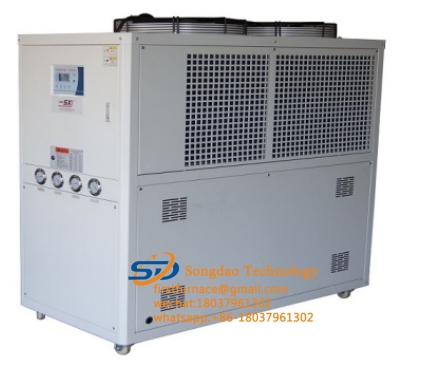- 27
- Nov
How to throttle the capillary tube of a small chiller
How to throttle the capillary tube of a small chiller
Small water chiller, hence the name Siyi means chiller with lower power. The refrigeration system of a small chiller sometimes uses a capillary tube as a throttling element. The capillary is a metal tube with a small diameter, which is installed on the liquid supply pipeline between the condenser and the evaporator, usually a copper tube with a diameter of 0.5~2.5mm and a length of 0.6~6m.

The refrigerant charged by the small chiller passes through the capillary tube, and the throttling process is completed by the flow process along the total length of the capillary tube, and a relatively large pressure drop will be generated at the same time. The amount of refrigerant passing through the capillary tube and the pressure drop mainly depend on its inner diameter, length, and pressure difference between the inlet and outlet. The capillary structure is simple, but the throttling process of the refrigerant in and is very complicated. The inner diameter and length of the capillary can be calculated or confirmed by checking the relevant graphs, but there are often large errors. At present, various chiller manufacturers commonly use test methods or refer to similar products to select the diameter and length of the capillary.
Because the capillary tube used cannot adjust the liquid supply, it is only suitable for small chillers with little change in load. For example: current household air conditioners, refrigerators, small air-cooled chillers, small water-cooled chillers, etc. In addition, the operation performance of the refrigeration device using capillary tubes is very sensitive to the refrigerant charge and has a greater impact on the efficiency of the refrigeration system. After the refrigeration compressor stops, the high and low pressures of the condenser and evaporator are balanced with the throttling of the capillary tube, thereby reducing the load when the motor is moved again.
